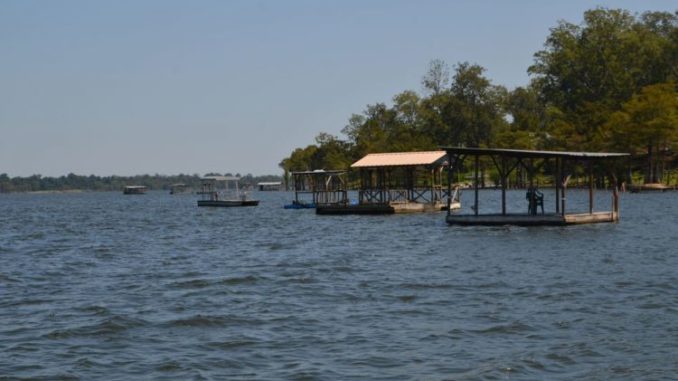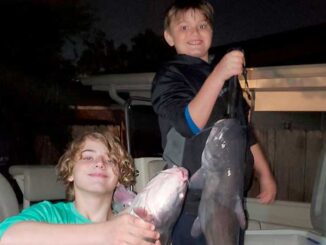
Rafts is the local term for well, rafts — essentially floating platforms that people fish from.
Rafts have a very old tradition on the big oxbow. In the 1950s and 60s, the lake boasted commercial rafts. They were big, permanently moored and constructed of large floating logs chained together and planked over for easy walking.
Raft customers were ferried from the shore to the rafts by flat-bottomed bateaus. Customers fished through holes built in the decking or between the big logs. Raft owners attracted fish to their rafts by sinking untold boatloads of brush beneath them. Fishing was done straight down.
The commercial rafts are gone, but the tradition lives on with dozens and dozens of smaller rafts constructed and owned by individuals for their own use. Every raft is built differently, each to its owner’s whims.
Like the commercial rafts of yore, a few are built of large logs, but most float on plastic barrels, metal pontoons or large foam blocks. Almost all are roofed to provide shade, but most have completely open sides, with some even featuring rudimentary outhouses.
One thing that they all share is their owners have sunken large amounts of brush beneath them to attract fish. Besides local vegetation like buttonwood and willow, recycled Christmas trees are very often used.
According to the Francoises, Christmas trees are in such high demand as fish attractors that people with Old River camps and rafts travel to Baton Rouge with trailers to pick up discarded trees after the holidays.
Padra Francois said unwritten rules of courtesy apply to these private rafts on public waters. “Locals consider it OK to fish around a raft if you don’t tie off to it or get on it,” she said. “And above all, don’t approach a raft with people fishing on it.”
